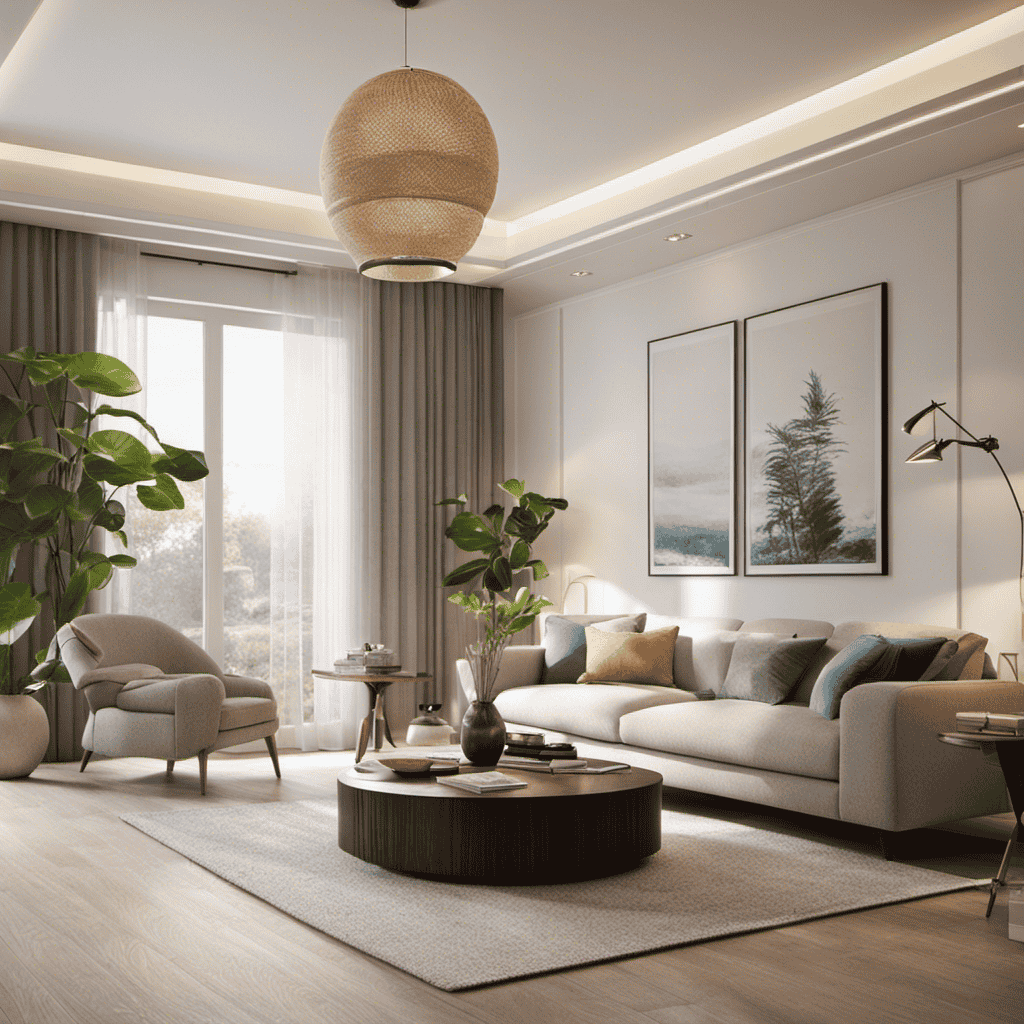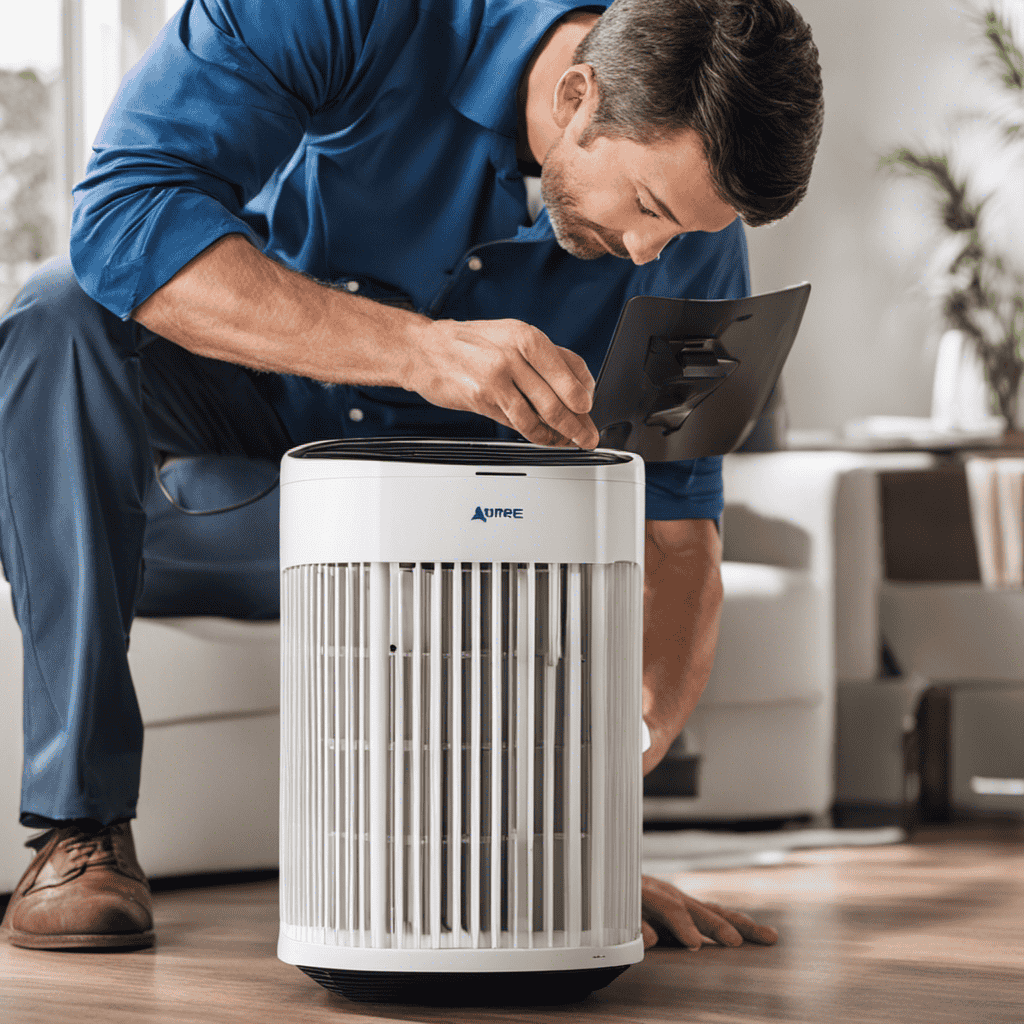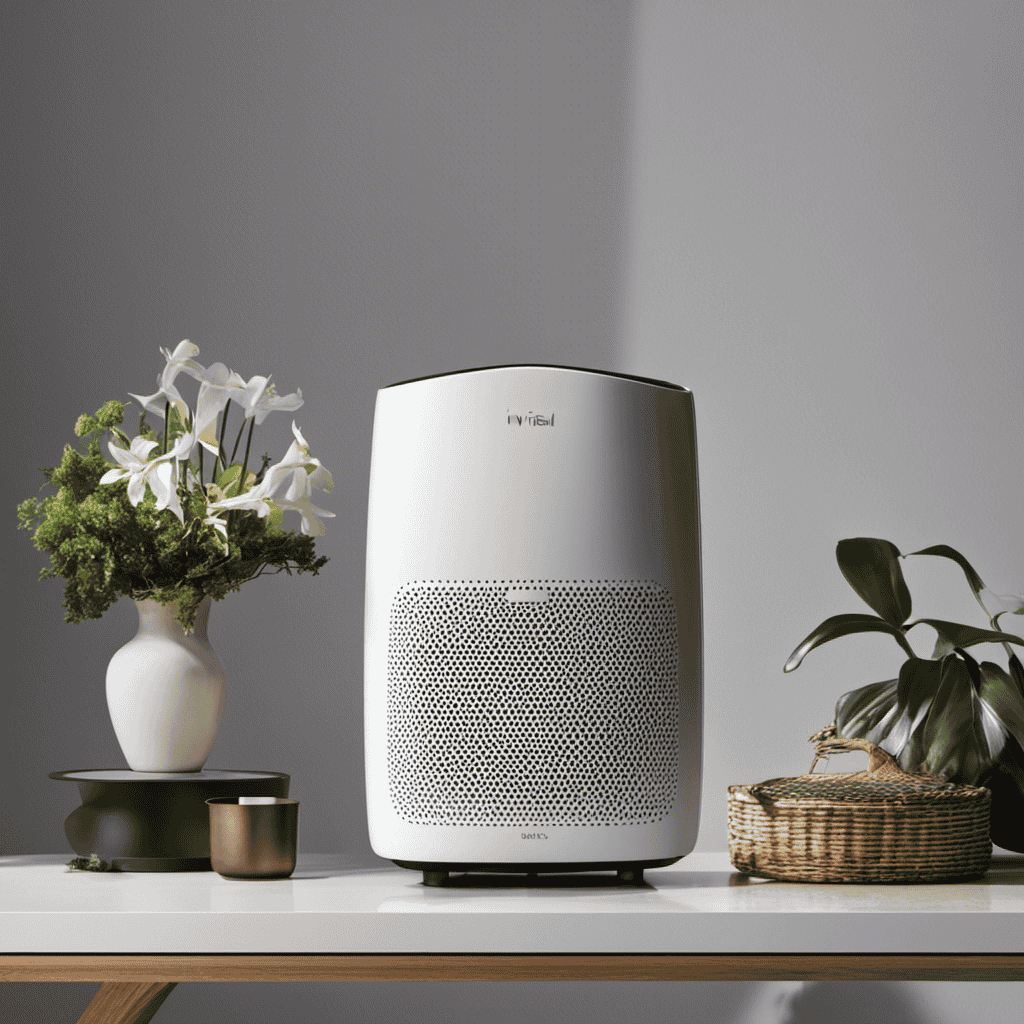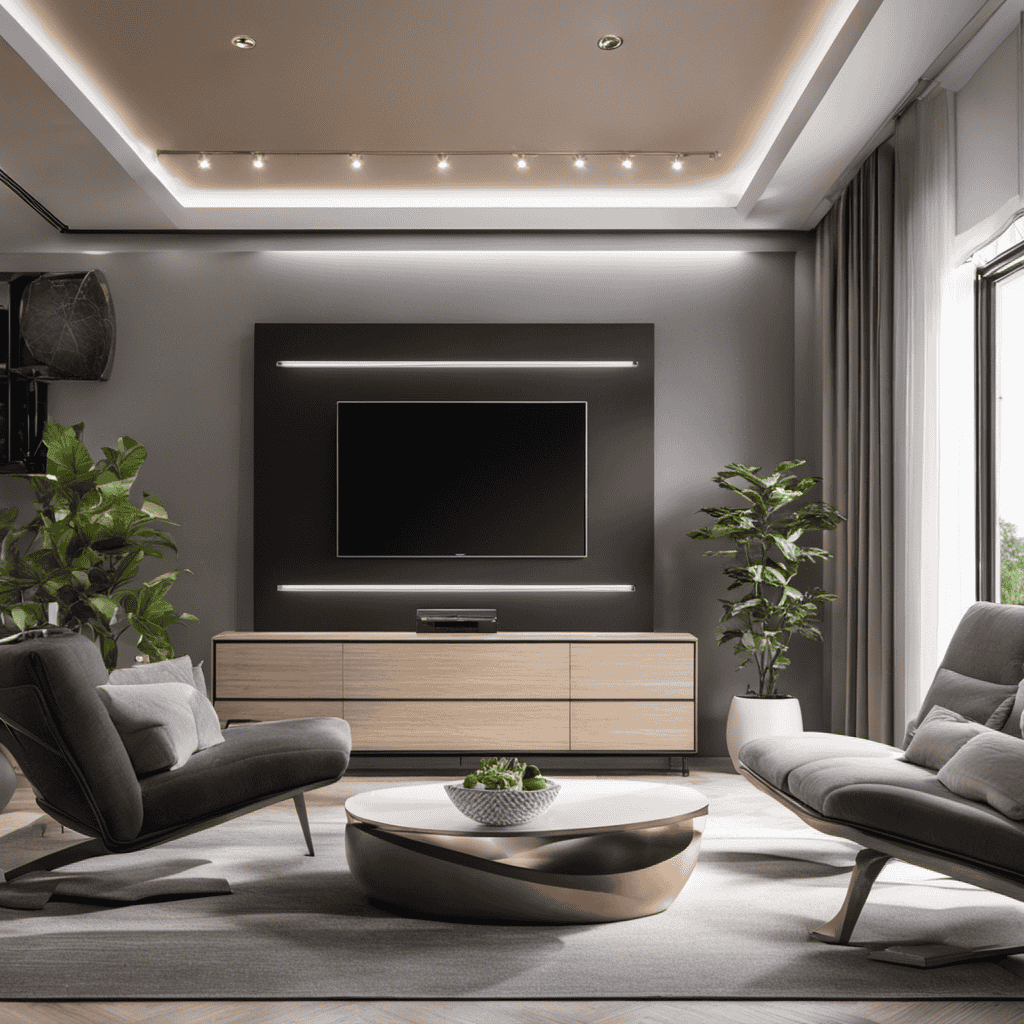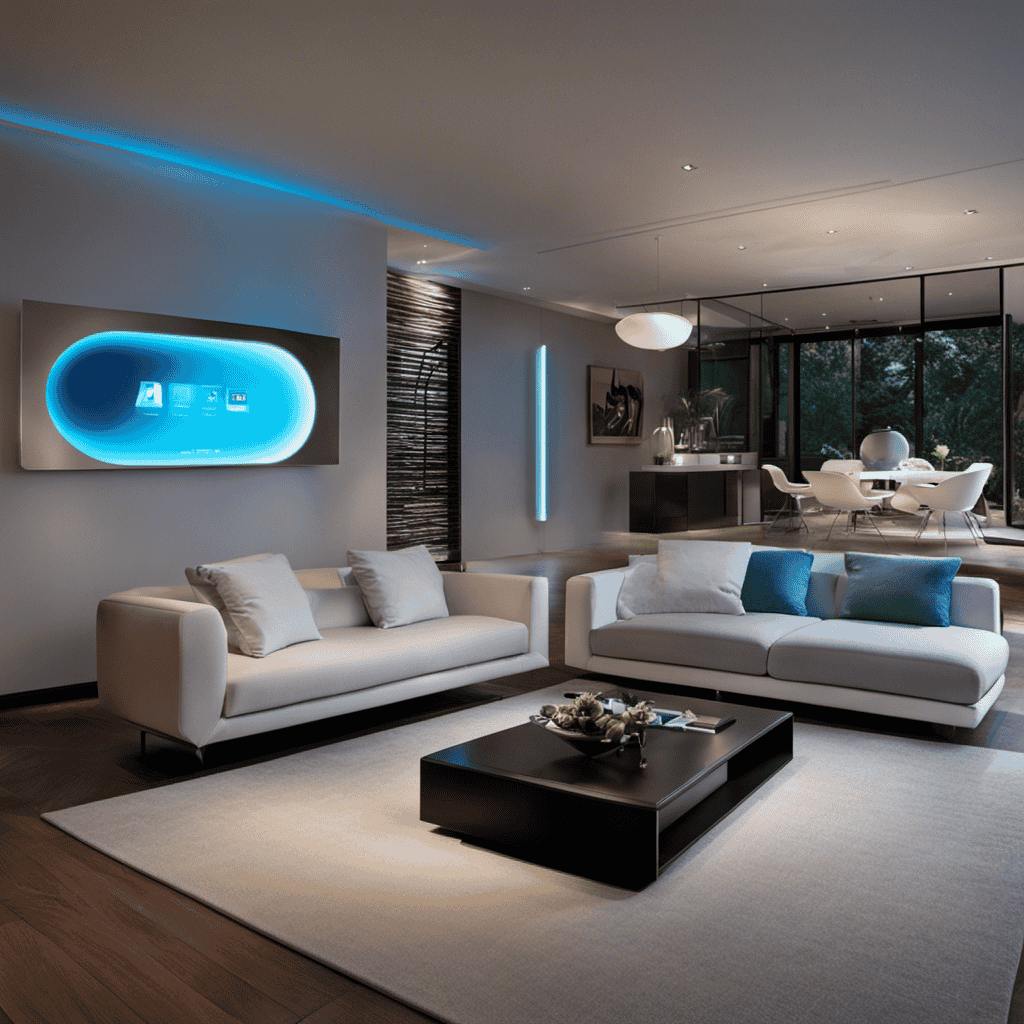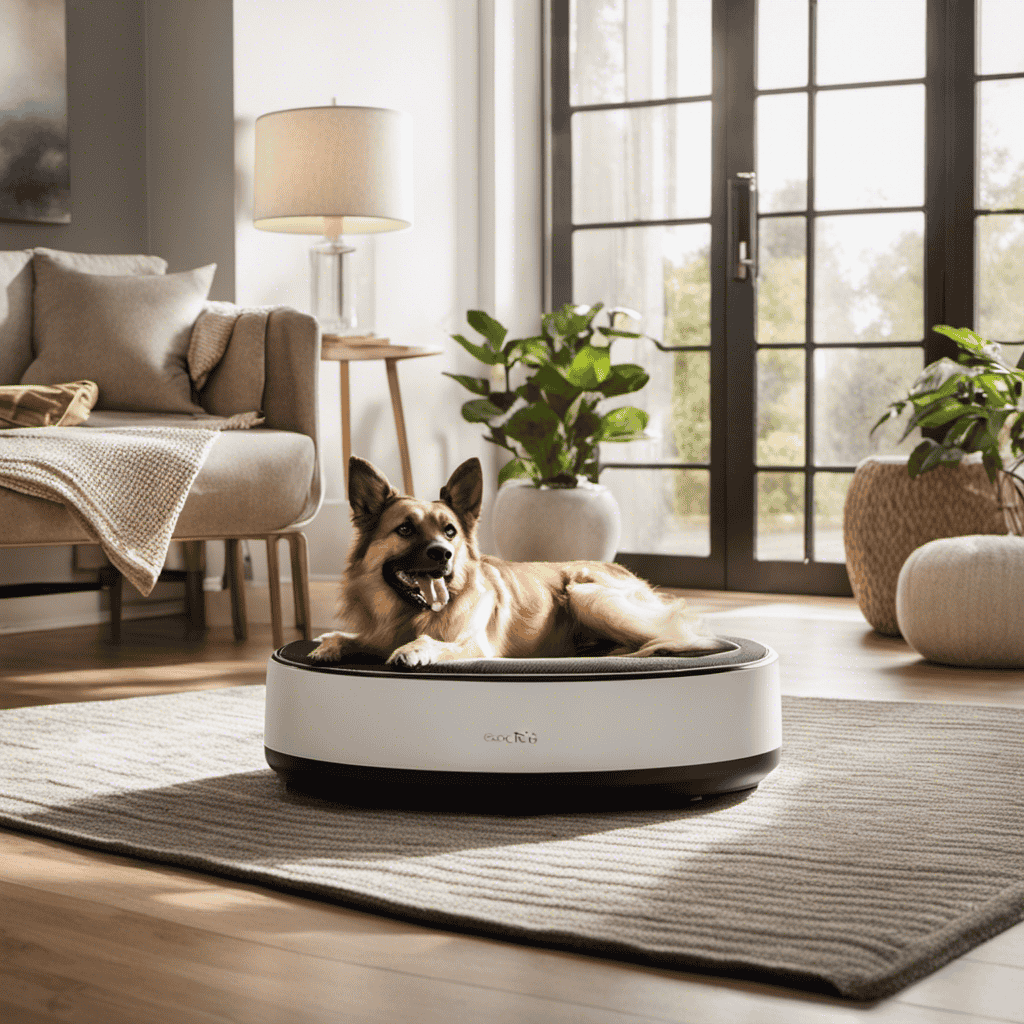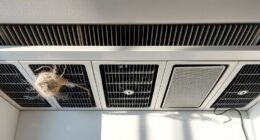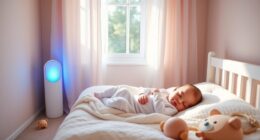I always strive to have fresh, clean air in my home, so I was interested in learning how often to use an air purifier. Upon conducting research, I came across some useful guidelines that I would like to share.
By considering factors like air quality levels and manufacturer recommendations, we can determine the optimal usage frequency.
Additionally, it’s important to recognize signs that indicate the need for increased purifier usage and find a balance between energy efficiency and air purification needs.
Let’s dive into this informative journey together.
Key Takeaways
- Consider manufacturer’s recommended usage guidelines based on room size and air purifier model.
- Take into account air quality levels in your home or office, especially in areas with high pollution or if you have respiratory conditions.
- Evaluate the number of occupants and their lifestyle habits, such as pets or smoking indoors.
- Pay attention to signs that indicate increased usage, such as worsened allergy symptoms or increased dust buildup.
Factors to Consider When Determining Usage Frequency
When determining how often to use an air purifier, there are several factors to consider.
One of the first things to think about is the recommended air purifier usage guidelines provided by the manufacturer. These guidelines are typically based on the size of the room and the specific model of the air purifier. Following these recommendations ensures that you are getting the maximum benefit from your air purifier.
Another important factor to consider is the air quality in your home or office. If you live in an area with high pollution levels or have respiratory conditions such as asthma or allergies, you may need to use your air purifier more frequently. Using it consistently can help remove pollutants, allergens, and irritants from the air, leading to improved indoor air quality and potential health benefits.
Additionally, the number of occupants in the space and their lifestyle habits should be taken into account. For example, if you have pets that shed a lot or if someone smokes indoors, you may need to use the air purifier more often to keep the air clean and fresh.
Recommended Usage Guidelines From Manufacturers
When it comes to using an air purifier, it’s important to consider the manufacturer’s recommended frequency of usage and the optimal air purification duration. Following these guidelines can help ensure that the air purifier is being used effectively and efficiently.
Manufacturers have conducted extensive research and testing to determine the best practices for using their products, so it’s worth taking their recommendations into account for maximum benefit.
Manufacturer’s Recommended Frequency
The manufacturer’s recommended frequency for using an air purifier can vary depending on the model. Factors to consider when determining how often to use an air purifier include the size of the room, the level of air pollution, and the sensitivity of the individuals in the space. Signs of increased usage may include worsened allergy symptoms, increased dust buildup, or a musty odor. It is important to refer to the manufacturer’s guidelines for specific recommendations, as some models may suggest continuous use while others may recommend using the air purifier for a certain number of hours per day. Here is a table summarizing the recommended frequency for some popular air purifier models:
| Air Purifier Model | Manufacturer’s Recommended Frequency |
|---|---|
| Model A | 24/7 |
| Model B | 8-10 hours per day |
| Model C | 4-6 hours per day |
| Model D | 2-4 hours per day |
Remember to adjust the usage based on your specific needs and the air quality in your environment.
Optimal Air Purification Duration
It’s important to find the optimal duration for purifying the air to ensure maximum effectiveness. When it comes to using an air purifier, timing is everything. Here are four key factors to consider:
-
Room Size: The size of the room plays a crucial role in determining the duration of air purification. Smaller rooms may require fewer hours of operation compared to larger spaces.
-
Air Quality: If the air quality is particularly poor due to factors like smoke or allergens, it’s advisable to run the air purifier for longer periods to achieve the desired results.
-
Allergies or Asthma: Individuals with allergies or asthma can benefit from running the air purifier continuously, as it helps remove potential triggers from the air, providing relief and improving overall respiratory health.
-
Personal Preference: Ultimately, the optimal duration for air purification depends on personal preference. Some people prefer to run the purifier all day, while others choose specific times during the day to ensure clean air.
Understanding Air Quality Levels in Your Environment
Understanding air quality levels in your environment can help you determine how often to use an air purifier. The air quality index (AQI) is a useful tool to assess the quality of the air you breathe. It provides information about the levels of pollutants present in the atmosphere and their potential health effects. The AQI categorizes air quality into six levels, ranging from good to hazardous, with corresponding color codes for easy understanding.
Regularly checking the AQI in your area can give you insights into the air quality and guide you in deciding when to use your air purifier. For instance, if the AQI is in the moderate range, it implies that the air quality is acceptable, but there may be some pollutants present. In such cases, using the air purifier intermittently can help remove these pollutants and maintain better indoor air quality.
On the other hand, if the AQI reaches unhealthy levels, it is crucial to use the air purifier consistently to ensure that you breathe clean air. Pollutants like particulate matter, ozone, and volatile organic compounds can have detrimental effects on your health, especially for individuals with respiratory conditions or compromised immune systems.
Signs That Indicate the Need for Increased Purifier Usage
To ensure you’re breathing clean air, pay attention to signs that indicate you need to use your air purifier more frequently. Here are four common signs that may indicate the need for increased purifier usage:
-
Increased allergies: If you notice a sudden increase in allergy symptoms, such as sneezing, itchy eyes, or a runny nose, it could be a sign that there are more allergens present in the air. Using your air purifier more often can help remove these allergens and provide relief.
-
Respiratory symptoms: If you or your family members are experiencing more frequent coughing, wheezing, or difficulty breathing, it could be a sign that the air quality in your home is poor. Using your air purifier can help filter out harmful particles and improve indoor air quality.
-
Lingering odors: If you notice persistent odors in your home, such as cooking smells or pet odors, it may indicate that your air purifier isn’t running frequently enough. Increasing its usage can help eliminate these odors and keep your home smelling fresh.
-
Dust accumulation: If you find that dust accumulates quickly in your home, even after regular cleaning, it could be a sign that your air purifier isn’t effectively removing airborne particles. Using it more often can help reduce dust levels and keep your home cleaner.
Balancing Energy Efficiency With Air Purification Needs
In order to balance energy efficiency with my air purification needs, I need to consider the energy consumption of my air purifier while still ensuring it meets air quality standards. It’s important to find a balance between having clean air and minimizing energy usage.
To help me make an informed decision, I created a table to compare different air purifiers based on their energy consumption and their effectiveness in meeting air quality standards:
| Air Purifier Model | Energy Consumption | Air Quality Standards |
|---|---|---|
| Model A | Low | Meets all standards |
| Model B | Moderate | Meets most standards |
| Model C | High | Meets basic standards |
By looking at the table, I can see that Model A has a low energy consumption and meets all air quality standards. This would be the ideal choice for balancing energy efficiency and air purification needs. However, if I have specific air quality concerns that require higher standards, I may need to consider a more energy-consuming model like Model B or C.
It’s important to note that while energy consumption is a consideration, compromising on air quality standards may have negative effects on my health. Therefore, I will carefully evaluate the trade-offs and choose the air purifier that best meets both my energy efficiency and air purification needs.
Maintenance and Cleaning Schedule for Optimal Performance
Make sure you regularly clean and maintain your air purifier to ensure optimal performance and efficiency. Neglecting proper maintenance can lead to a decrease in air purification effectiveness and may even result in the release of pollutants back into the air. Here are some cleaning techniques and common mistakes to avoid:
-
Regularly replace filters: Filters are the heart of an air purifier and need to be replaced according to the manufacturer’s recommendations. Failure to do so can result in clogged filters that reduce airflow and hinder the purifier’s ability to capture pollutants effectively.
-
Clean the exterior: Dust and debris can accumulate on the exterior of the air purifier, affecting its appearance and potentially blocking airflow. Use a damp cloth or mild cleaning solution to wipe down the surface regularly.
-
Vacuum the pre-filter: Many air purifiers have a pre-filter that captures larger particles. Vacuuming this filter periodically can help prolong the life of the main filter and maintain optimal performance.
-
Avoid using harsh chemicals: When cleaning your air purifier, avoid using harsh chemicals or abrasive materials that can damage the unit. Stick to mild cleaning solutions and gentle cleaning techniques to ensure the longevity of your purifier.
Is the Frequency of Changing the Filter in a Coway Air Purifier the Same as Other Air Purifiers?
When it comes to coway air purifier filters, the frequency of changing them may vary compared to other air purifiers. It is important to follow the manufacturer’s guidelines for optimal performance. Regularly changing coway air purifier filters is crucial to ensuring clean and healthy air in your home.
Frequently Asked Questions
Can I Use an Air Purifier in Multiple Rooms at the Same Time?
Yes, you can use an air purifier in multiple rooms at the same time. It’s a great way to ensure that each room has clean and purified air.
However, keep in mind that you may need to adjust the settings or buy multiple purifiers depending on the size of the rooms.
Regular air purifier maintenance is important to ensure optimal performance.
Using an air purifier has many benefits, such as removing allergens, reducing odors, and improving overall air quality.
Is It Safe to Use an Air Purifier While Sleeping?
Using an air purifier while sleeping is generally safe. It can help improve air quality in your bedroom by removing allergens, dust, and other pollutants.
However, consider the noise levels of the purifier as it may disrupt your sleep. Some purifiers have a sleep mode or a quiet setting to minimize noise.
Additionally, using an air purifier while sleeping may have potential health benefits, such as reducing asthma and allergy symptoms.
Can an Air Purifier Remove Pet Dander and Allergens From the Air?
An air purifier can effectively remove pet dander and allergens from the air.
I recently discovered that according to a study conducted by the American Lung Association, air purifiers can reduce indoor air pollutants by up to 99%.
When it comes to pet dander, it’s important to choose an air purifier specifically designed to target pet allergies.
The best air purifiers for pet dander have specialized filters that can capture even the smallest particles, providing cleaner and healthier air for you and your furry friends.
How Long Does It Take for an Air Purifier to Improve Air Quality?
Improving air quality is a top priority for me. I want to ensure the effectiveness of my air purifier.
It’s important to consider how long it takes for an air purifier to improve air quality. There are several factors that can influence this, such as the size of the room and the level of pollution.
It’s best to consult the manufacturer’s instructions and regularly monitor the air quality to determine the optimal usage frequency.
Can an Air Purifier Eliminate Cooking Odors and Cigarette Smoke?
An air purifier can be effective in eliminating household odors such as cooking smells and cigarette smoke. It uses filters to capture and remove the particles that cause these odors, improving indoor air quality.
However, it may not be as effective against outdoor pollutants such as smog or pollen.
To maximize its effectiveness, it’s recommended to run the air purifier constantly or as needed, depending on the level of odors or pollutants in your home.
Conclusion
In conclusion, determining how often to use an air purifier depends on various factors such as the manufacturer’s guidelines, air quality levels, and signs indicating the need for increased usage.
It’s like finding the perfect rhythm in a dance, where you balance energy efficiency with the purification needs of your environment.
Just like maintaining a clean and tidy home, regular maintenance and cleaning of the purifier ensures optimal performance.
So, let the air purifier be your partner in creating a fresh and healthy environment for you to breathe in.
